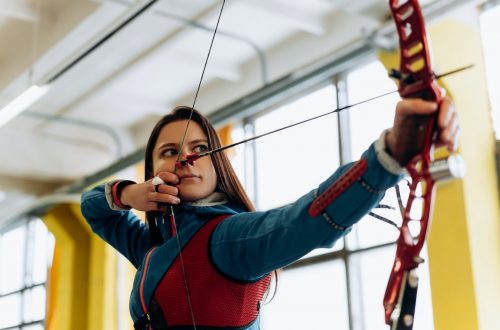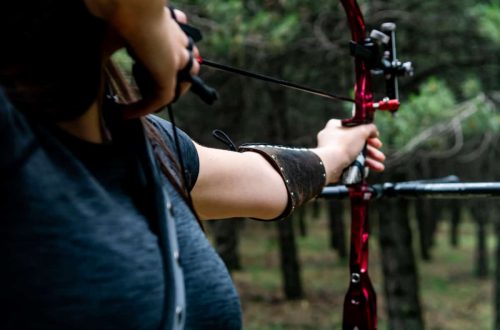
Recurve vs compound bow – what’s the difference?

When it comes to selecting the right equipment for archery, the choice between a recurve bow and a compound bow is crucial. Each type of bow offers unique features and advantages that cater to different preferences and skill levels. Understanding these key differences can significantly enhance your shooting experience and performance.
The recurve bow is known for its simplicity and traditional design. It consists of a curved structure that helps to store energy efficiently, making it a popular choice for both beginners and experienced archers. Its design allows for a smooth release and an aesthetically pleasing appearance, often evoking a sense of nostalgia associated with the ancient art of archery.
In contrast, the compound bow utilizes a system of pulleys and cams to achieve a mechanical advantage, enabling archers to shoot arrows with greater speed and precision. This modern innovation is particularly appealing for those looking for increased power and adjustability, making it a favored choice in various competitive archery settings.
Ultimately, the choice between a recurve and a compound bow hinges on individual preferences, shooting style, and desired outcomes in the world of archery. By examining the distinct characteristics of each bow type, archers can make informed decisions that align with their skills and goals.
Understanding the Mechanisms: How Each Bow Operates

In the world of archery, the choice between recurve and compound bows often hinges on understanding their distinct mechanisms. Each bow type operates differently, which influences performance, accuracy, and user experience.
Recurve bows function on a simple principle. They feature limbs that curve away from the archer when unstrung, which provides a more efficient energy transfer when the bow is drawn. As the archer pulls the string, the limbs bend and store energy, releasing it to propel the arrow forward. This design enhances speed and offers a traditional feel, making recurve bows popular among those who appreciate classic archery techniques.
On the other hand, compound bows utilize a system of pulleys and cams to optimize power and reduce the force required to hold the string at full draw. When an archer draws a compound bow, the cams rotate, causing the limbs to flex and store energy. Once drawn, the unique gearing mechanism effectively diminishes the draw weight, allowing for easier aim and stability. This technology provides greater accuracy and speed, appealing to competitive archers and hunters alike.
Ultimately, the operation of each bow type influences an archer’s experience and performance in the field. Selecting between a recurve and a compound bow often depends on personal preference, goals, and the desired style of archery.
Target Practice vs Hunting: Which Bow Fits Your Needs?

When deciding between a recurve bow and a compound bow, it’s essential to understand how each option aligns with your specific purpose–be it target practice or hunting. Both types have unique characteristics that cater to different skill sets and requirements.
For target practice, precision and consistency are paramount. Recurve bows offer a traditional shooting experience, allowing for greater visibility of the arrow’s path and an intuitive shooting process. They require more skill and practice to master but are often preferred by archers who enjoy the art of archery and appreciate the simplicity of a single-string design. The choice of a recurve bow can enhance your aiming abilities, making it an excellent option for honing your skills on the range.
On the other hand, compound bows are engineered for efficiency and power. They incorporate advanced technology, including pulleys and cams, which significantly reduce the draw weight. This allows for easier holding at full draw, making it easier to aim, especially for extended periods. For hunting, where quick and accurate shots are crucial, a compound bow is typically favored. Its ability to shoot arrows at higher speeds and greater force translates into better performance against game.
Ultimately, your choice between a recurve and a compound bow should be guided by your primary goal. If you aim to improve your shooting form and enjoy archery as a sport, a recurve bow aligns perfectly with those intentions. Conversely, if hunting is your main focus, a compound bow may be the ideal fit, delivering the power and precision necessary for successful outings in the field.
Maintenance and Upkeep: Comparing Care Requirements for Both Bows
When it comes to archery, understanding the maintenance and upkeep of equipment is crucial for optimal performance. Recurve and compound bows each have unique care requirements that reflect their distinct designs and functionalities.
Recurve bows, known for their simplicity, generally require less maintenance. The most crucial aspect of care involves periodic inspections for any signs of wear or damage. Checking the limbs and riser for cracks or splinters is important, as these can affect performance. Additionally, the string should be waxed regularly to ensure longevity and prevent fraying. While recurve bows are forgiving in terms of care, it is recommended to store them in a cool, dry place to avoid moisture damage.
In contrast, compound bows demand a more involved maintenance routine due to their intricate systems. Users must regularly check the cam system, cables, and strings for any signs of wear and tear. Properly maintaining the bowstring is essential, as it can stretch or fray over time. Regular tuning is also necessary to ensure that the bow stays in optimal shooting condition. This involves adjusting the cam alignments and limb orientations, making tools and mechanical aptitude beneficial for the owner.
As a choice for archers, each type of bow presents unique maintenance hurdles. Recurve bows are ideal for those who prefer a straightforward approach to upkeep, while compound bows suit individuals who don’t mind investing more time and effort into maintenance for improved performance. Ultimately, understanding the care requirements for both types can greatly enhance the shooting experience and prolong equipment life.




